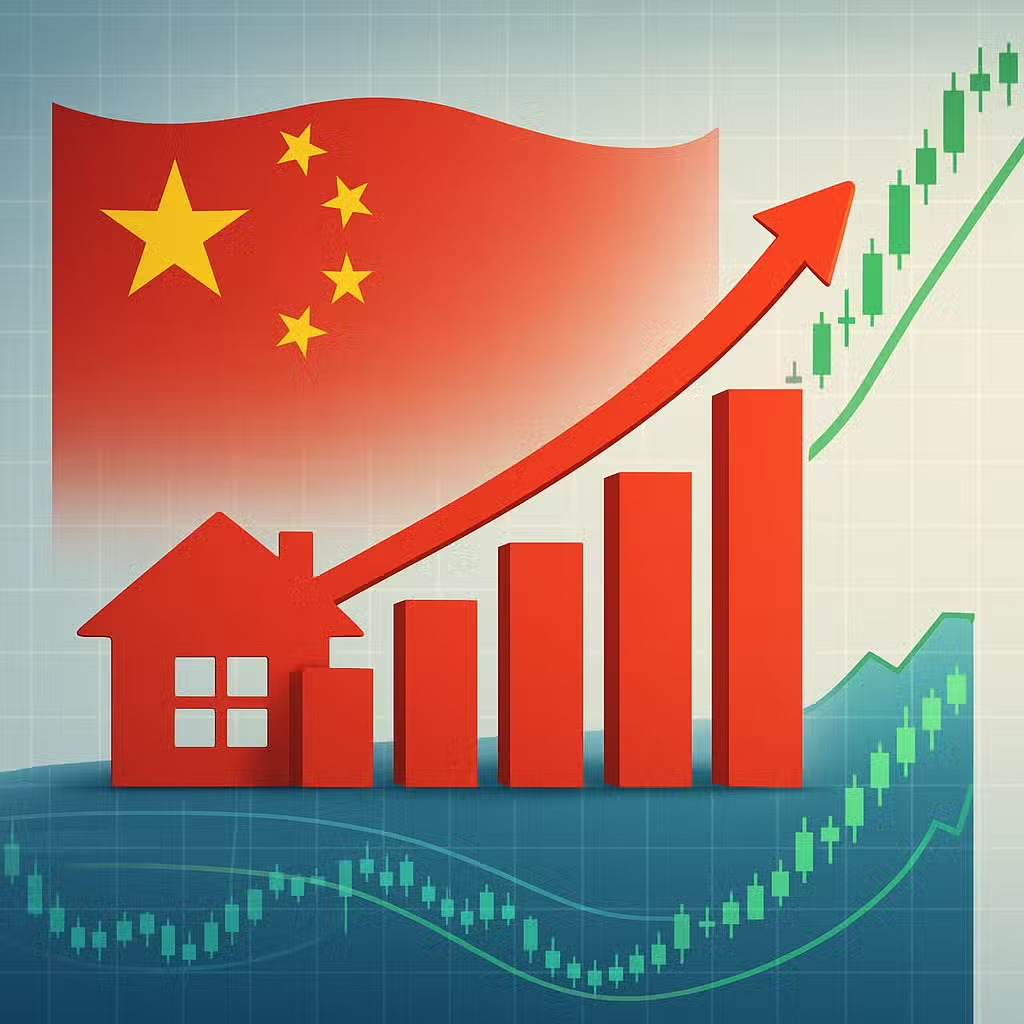China’s Housing Support Measures Boost Key Stock Indexes, Signaling Improved Investor Confidence
Think of China’s economy like a giant shopping mall. If shoppers stop spending, the whole place slows down—even if some stores are still busy. That’s why what’s happening with China’s retail sales matters for investors everywhere.
China’s Spending Problem
China’s economy doesn’t rely on shopping as much as some countries—private consumption is only about 40% of its total output. Instead, China depends a lot on building things and selling goods overseas. But with global demand cooling off and the U.S. adding tariffs, China can’t count on exports the way it used to.
In August, China’s exports grew just 4.4% compared to last year. That’s a big drop from July’s 7.2% jump. At the same time, people in China are spending less, making it harder for the country to hit its goal of growing 5% this year. To help, leaders in Beijing are talking about spending more to support the economy, especially by helping the housing market.
Unemployment is also a worry. In August, the jobless rate rose to 5.3%. For young people, it’s even tougher—almost 19% can’t find work. If people feel shaky about their jobs, they’re less likely to shop, which hurts businesses and slows everything down even more.
Why Investors Are Watching
Investors care because China is a huge part of the world’s economy. If Chinese shoppers start spending again, it could boost profits for companies everywhere. But if things stay slow, it could drag down global markets.
- Bullish signs: There’s hope that China’s government will step in with more help, especially for the housing market. That’s lifted stock prices recently.
- Bearish signs: If shoppers stay cautious and unemployment stays high, companies could see lower sales and profits.
Mainland Stock Markets Jump
The idea of more government help has made investors more confident. China’s CSI 300 index hit 4,590 on September 25—the highest since March 2022. The Shanghai Composite also shot up to a 10-year high of 3,900 that day.
So far this year, the CSI 300 is up 16.7% and the Shanghai Composite is up 15%. That’s despite worries about exports and housing. Meanwhile, the Hang Seng Index in Hong Kong has jumped an eye-popping 32.3%, which is making some investors take a fresh look at Mainland Chinese stocks.
China’s push to lead in artificial intelligence and semiconductors has also sparked interest. If government support keeps coming and shoppers regain confidence, these markets could climb even higher.
Looking at the Big Picture
China’s consumer spending is low compared to other big economies. For example, in the United States, private consumption makes up about 68% of GDP—much higher than China’s 40%. [Source: World Bank]
This means that if China can boost shopping and services, it could help balance its economy and make growth more stable in the long run. But getting people to spend more means fixing problems like high youth unemployment and housing worries.
Bulls vs. Bears: What Could Happen Next?
- Bulls: More government help could spark a recovery in shopping and housing. If people feel better about their jobs, they’ll spend more, helping stocks and companies grow.
- Bears: If exports keep dropping and people don’t feel confident, spending could stay weak. That would make it tough for China to hit its growth goals, and could pull down markets around the world.
Investor Takeaway
- Watch for new signs of government support, especially for the housing market—this could boost stocks further.
- Keep an eye on China’s consumer spending and unemployment numbers. These are clues to whether the recovery is real or just talk.
- Consider the long-term: If China succeeds in shifting to a more consumer-driven economy, it could mean steadier growth for years.
- Diversify your portfolio—don’t bet everything on one country or sector, especially when things are uncertain.
- Read up on global trends, as what happens in China often ripples across markets worldwide.
For the full original report, see FX Empire







